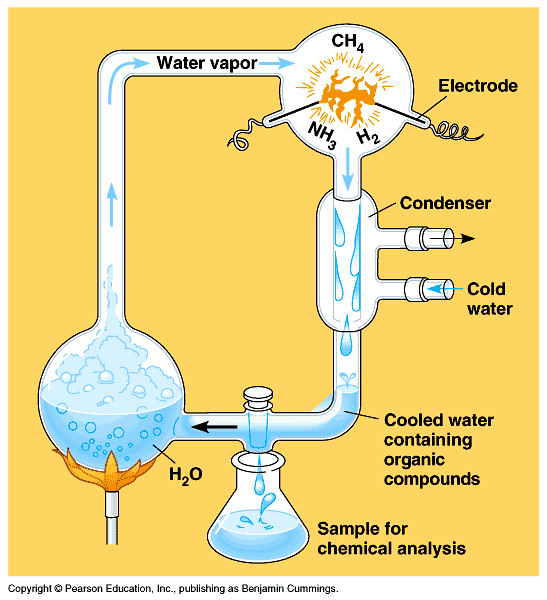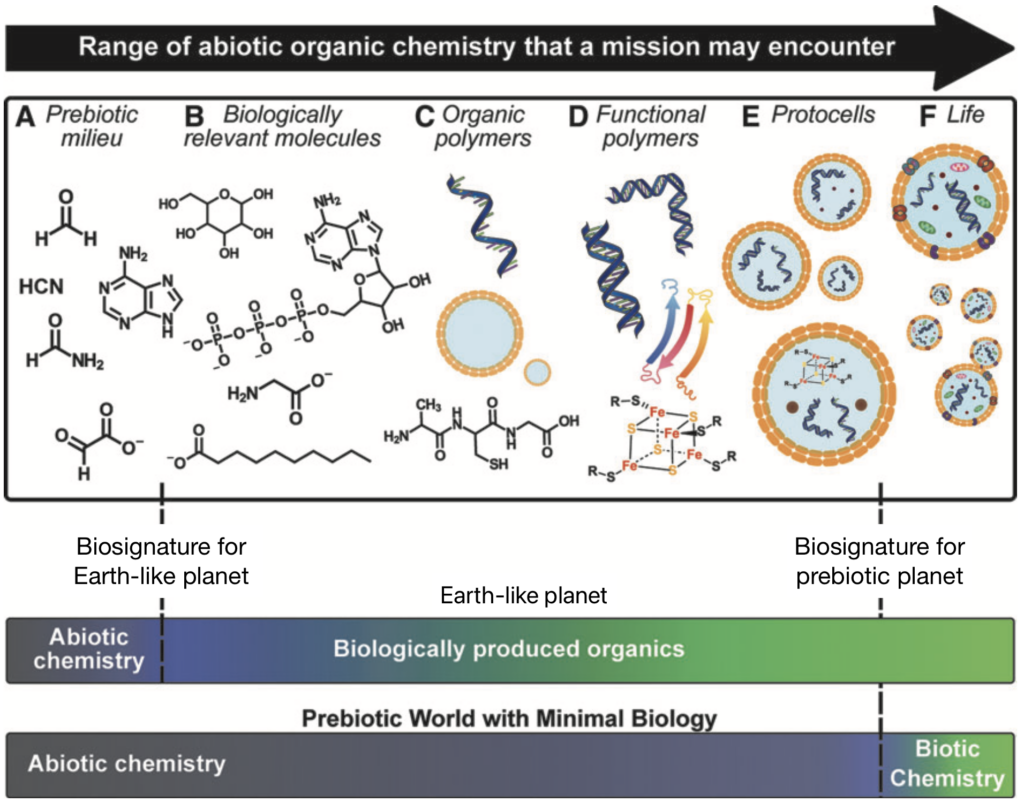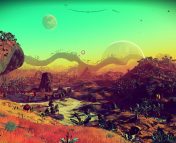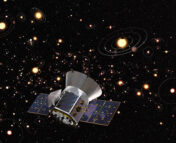Authors: Laura M. Barge, Laura E. Rodriguez, Jessica M. Weber, and Bethany P. Theiling, Karla A. Núñez, et al.
First Author’s Institution: NASA Jet Propulsion Laboratory, California Institute of Technology, Pasadena, California, USA.
Status: Published in Astrobiology [open access]
Arguably the most important tool in our search for extraterrestrial life is a reliable way to identify biosignatures, chemical indicators that differentiate life from non-living systems. This is a pretty hefty goal that requires a deep understanding of both biology and the natural geological and chemical processes involved in planet formation. Today’s authors take a deep dive into biotic (living) and abiotic (non-living) chemistry and use lab experiments to revamp our approach to identifying biosignatures.
Lab experiments masquerading as life
The vast majority of our information for both biotic and abiotic chemical signatures comes from samples on Earth. However, life is so abundant on earth and biology and abiotic systems have been tightly intertwined for so much of Earth’s history that scientists generally agree that it’s not sufficient to extrapolate what we see on Earth to all planetary systems.
Instead of using Earth samples, today’s authors favor controlled laboratory experiments to systematically test the boundaries of what could realistically be considered a biosignature.
Remarkably, lab experiments have already been able to outline a possible route to complex cell life from basic molecules. From a biosignatures perspective, the success of these experiments is both a plus and minus. On one hand, we get a much better idea of how the origins of life might have played out. However, the experiments also prove that a lot of what we associate with biology can actually be done by completely abiotic processes and with very basic inputs.
For example, multiple lab experiments have shown that the basic building blocks of life, such as amino acids and sugars, can be made from molecules like CO2 and methane, substances that would be pretty common in the early solar system (Figure 1). Experiments have also shown how different parts of the cell can form and begin to carry out their own chemical reactions, sometimes reaching a point where they can create their own fuel to continue driving those reactions. Once life gets started from these building blocks, the possible reactions they can undergo increase exponentially as the organic material interacts with its environments and forms more and more complex materials.

These types of experiments tell us how life might have started, but they also show that systems dominated by abiotic processes, like evaporation or heating, could host a lot of the building blocks of life, without life actually being present. This leads to three possible types of worlds – abiotic, where there is absolutely no life; prebiotic, where the chemical structures needed to make life are present, but were created by abiotic processes and have not yet evolved into life; and biotic, where life is currently present. We can think of the prebiotic world as an abiotic world with the potential to become biotic; it is currently experiencing complex abiotic processes which may or may not eventually contribute to the origins of life.
A new metric for biosignatures
The takeaway from all of these laboratory experiments is that categorizing biotic versus abiotic signatures is complicated, will probably vary a lot between different planets, and likely depends on what stage of life’s development we’re observing. A biosignature for a biotic planet might not actually apply to a prebiotic planet, where the same chemical traces could be made without life. But the authors have a suggestion for how to untangle all of these issues!
They suggest that we should redefine the goals for space missions searching for life. Instead of calibrating a confirmation of life to what we see on Earth, we should first identify what kinds of chemical processes are occurring on the planet, and ask how they would look to our instruments. Then instead of universal biosignatures, we should set the threshold for what we consider to be a biosignature based on our understanding of the observed planet’s environment.
Figure 2 shows what this might look like for an Earth-like planet versus a prebiotic planet that has the building blocks of life, but is dominated by abiotic processes for the time being. Since biology is so prevalent on Earth, just seeing the molecules needed for life could be an adequate sign of biology. But in the prebiotic world, abiotic processes are creating everything up to protocells, so we aren’t actually looking at anything uniquely indicative of life until we see the fully formed cells at step F.

To construct a process for identifying biosignatures, the authors say that astrobiologists should work on making a large library of possible abiotic compounds. The goal is to make it easier to identify the outputs of abiotic chemistry on other planets and to provide more specific abiotic benchmarks for future missions.
Reframing the search for life on a planet-by-planet basis would make things much more complicated, but it would help us not jump to conclusions when we find more complex compounds, and potentially eliminate a lot of false positives. Building a more holistic understanding of biotic and abiotic chemistry would be really helpful in driving more informed and targeted mission planning as we continue to explore our own Solar System and beyond!
Astrobite edited by: Mark Popinchalk
Featured Image Credit: “chemistry bottles with liquid inside” by zhouxuan12345678





Fir the past 2 yrs..this retired amateur has been doing a deep dive into asteroids, comets, cosmic dust and meteorites. That interest pointed to the purpose of these studies where did life begin and does it exist elsewhere.
This article and your excellent summary pulled all the together. No it doesn’t repeat the last 50 yrs of research on my interests but it presents a different approach of trying to answer the question is life elsewhere. Thank you